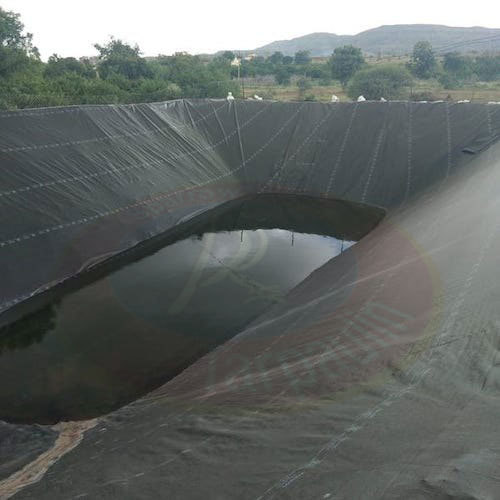#pond liners
Text
While HDPE has more excellent puncture resistance, LLDPE is more flexible and can be stretched easily over obstructions. With greater flexibility, LLDPE can be prefabricated for field installation instead of HDPE, which must be entirely welded on-site.
Earth Shield Environmental Co., Ltd.
WhatsApp: +86 189 6341 6260
Tel: +86-531-76652566/+86-531-76652399
E-mail: [email protected]
Web: www.earthshields.com
#HDPE Geomembrane#LLDPE Geomembrane#Geomembranes#geomembrane#hdpe geomembrane#geomembranes#pond liners
0 notes
Text
RPE Pond Liners: The Ultimate Solution for Water Containment

RPE (Reinforced Polyethylene) pond liners are revolutionizing the way water features such as ponds, lakes, and reservoirs are constructed and maintained. These premium-grade liners offer superior durability, flexibility, and resistance to environmental factors, making them the ultimate solution for water containment needs. In this article, we will explore the benefits of RPE pond liner india , discuss their applications, and address some frequently asked questions regarding their availability and usage in India.
0 notes
Text
hdpe fittings
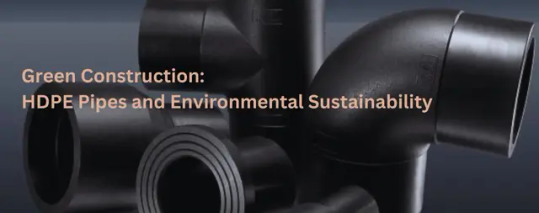
Green Construction: HDPE Pipes and Environmental Sustainability
Introduction:
In an era where environmental consciousness is at the forefront of construction practices, High-Density Polyethylene (HDPE) pipes have emerged as eco-friendly champions, significantly contributing to the paradigm of green construction. This blog explores the symbiotic relationship between HDPE pipes and environmental sustainability, shedding light on how these pipes are shaping a more environmentally responsible approach to construction.
The Eco-Friendly Essence of HDPE Pipes:
Recyclability:
At the heart of HDPE's green appeal lies its recyclability. HDPE pipes are entirely recyclable, allowing for the creation of a closed-loop system that reduces waste and lessens the burden on landfills. The recyclability of HDPE aligns seamlessly with the principles of a circular economy in construction.
Sewage and Drainage Solutions:
HDPE pipes prove their mettle in sewage and drainage applications, offering a robust and corrosion-resistant alternative to traditional materials. Their smooth interior surface minimizes clogs and facilitates efficient wastewater conveyance.
Reduced Carbon Footprint:
HDPE pipes contribute to the reduction of the construction industry's carbon footprint. Manufacturing HDPE pipes requires less energy compared to traditional materials, translating to lower greenhouse gas emissions. This inherent efficiency aligns with the broader goals of sustainable construction.
Applications in Water Conservation:
Efficient Water Management:
HDPE pipes play a pivotal role in water conservation efforts. Their leak-resistant nature ensures efficient water distribution, reducing water wastage in distribution networks. This not only conserves a precious resource but also aligns with the principles of sustainable water management.
Longevity and Low Maintenance:
The durability of HDPE pipes results in longer service life, reducing the need for frequent replacements. This longevity, coupled with low maintenance requirements, leads to fewer materials being consumed over time, promoting a more sustainable construction lifecycle.
Mitigating Environmental Impact:
Chemical Resistance:
HDPE pipes exhibit resistance to chemicals and corrosive substances. This resilience minimizes the environmental impact associated with potential leaks or spills, ensuring the protection of surrounding ecosystems and soil quality.
Energy-Efficient Installation:
The flexibility of HDPE pipes facilitates energy-efficient installation methods, such as trenchless construction. This not only minimizes disruption to ecosystems during installation but also contributes to energy savings throughout the construction process.
Beyond Water: Versatility in Sustainable Applications:
Renewable Energy Systems:
HDPE pipes extend their green influence to renewable energy applications. They are widely employed in the installation of geothermal systems, harnessing the Earth's natural energy for heating and cooling, further promoting sustainable construction practices.
Landfill Methane Collection:
In landfill sites, HDPE pipes are used for collecting methane gas. This not only aids in waste management but also showcases the versatility of HDPE pipes in supporting environmentally conscious solutions.
Conclusion:
HDPE pipes stand as beacons of sustainability in the construction industry, embodying the principles of green construction. From recyclability and reduced carbon footprint to efficient water management and versatile applications in renewable energy systems, HDPE pipes are catalysts for positive environmental impact. Embracing the eco-friendly attributes of HDPE pipes is not just a choice for construction; it is a commitment to building a greener, more sustainable future. To procure best quality HDPE pipes and fittings get in touch with us at Polyfab.
0 notes
Text
https://geosyntheticsystems.ca
Geosynthetic materials, offered by companies like Geo-Synthetic Systems (GSS), have become indispensable in various civil engineering, construction, and environmental projects due to their versatility, durability, and cost-effectiveness. Here's a closer look at the wide range of applications where geosynthetic materials are utilized effectively. With a focus on quality, reliability, and sustainability, GSS offers a diverse portfolio of geosynthetic materials designed to meet the unique requirements of each project. Their product range includes geotextiles, georgics, geomembranes, geocomposites, and other specialized geosynthetic solutions.
More info visit Website : https://geosyntheticsystems.ca
#Geotextiles#Gabion Baskets#Landscape Supplies#Landscape Edging#Pond Liner#Landscape Fabrics#Permeable Paving#Window Wells#Drainage Solutions
0 notes
Text
Natural Swimming Pond

Find the attractiveness of a natural swimming pond by Natural Pools. Our eco-friendly designs seamlessly integrate with nature, creating a peaceful oasis for relaxation and recreation. Transform your backyard into a luxurious retreat with Natural Pools' natural swimming pond designs.
1 note
·
View note
Text
The Value of HDPE Pond Liners for Durability, Flexibility, and Environmental Safety

Singhal Industries Pvt Ltd: Leading Supplier in Ahmedabad and Gujarat
In the realm of flexible packaging and industrial solutions, Singhal Industries Pvt Ltd has garnered a distinguished reputation over the years. With a strategic shift towards specialized business segments, the company has expanded its offerings to include innovative solutions that cater to diverse needs. One such area of expertise lies in the provision of high-quality HDPE pond liners, which stand out for their durability, flexibility, cost-effectiveness, and environmental safety. These liners not only ensure long-term performance but also offer essential protection for various applications.
Importance of HDPE Pond Liners
HDPE pond liners have emerged as essential components in the construction and maintenance of ponds, reservoirs, and water containment systems. Singhal Industries Pvt Ltd, recognized as a leading supplier in this domain, plays a pivotal role in meeting the growing demand for these liners across Ahmedabad, Gujarat, and throughout India. As reputable HDPE pond liner suppliers in Ahmedabad and Gujarat, the company prioritizes quality, reliability, and customer satisfaction.
The significance of HDPE pond liners cannot be overstated, particularly in regions like Ahmedabad and Gujarat, where water conservation and management are paramount. These liners provide a robust barrier that prevents seepage and leakage, thereby optimizing water retention and minimizing environmental impact. Singhal Industries Pvt Ltd's commitment to excellence is evident in its meticulous selection of materials and manufacturing processes, ensuring that each liner meets stringent quality standards.
When exploring HDPE pond liner supplier in Gujarat and beyond, factors such as material quality, customization capabilities, and affordability come into play. Singhal Industries Pvt Ltd excels in each of these areas, offering tailored solutions that align with diverse project requirements. Their expertise extends not only to manufacturing but also to consulting and support services, ensuring clients receive comprehensive assistance from inception to completion.
The versatility of HDPE pond liners makes them ideal for a range of applications beyond traditional water containment. From aquaculture and agricultural irrigation to landscaping and waste containment, these liners offer unparalleled adaptability. This adaptability is complemented by their ease of installation and maintenance, making them a preferred choice for projects of varying scales and complexities.
In the context of India's evolving industrial landscape, sustainable solutions like HDPE pond liners are gaining prominence. Singhal Industries Pvt Ltd, with its forward-thinking approach, actively contributes to this paradigm shift by promoting eco-friendly alternatives without compromising on performance. As HDPE pond liners suppliers in India, the company remains committed to promoting environmental safety and resource conservation through its product offerings.
For those seeking reliable HDPE pond liner suppliers in Ahmedabad, Gujarat, or anywhere in India, Singhal Industries Pvt Ltd emerges as a trusted partner. The company's extensive experience in the flexible packaging industry translates into unmatched expertise in polymer technologies, ensuring that every HDPE pond liner delivers exceptional value and longevity.
In summary, HDPE pond liners epitomize durability, flexibility, cost-effectiveness, and environmental safety. Singhal Industries Pvt Ltd's role as a leading supplier underscores its dedication to advancing sustainable solutions that empower industries and communities alike. Whether for agricultural, industrial, or recreational purposes, these liners epitomize the marriage of innovation and reliability, setting new benchmarks for performance and protection in water management.
FAQs (Frequently Asked Questions)
What are the benefits of using HDPE pond liners?
HDPE pond liners offer superior durability, flexibility, and cost-effectiveness compared to traditional pond lining materials. They are also environmentally safe and can be customized to fit various pond sizes and shapes.
How long do HDPE pond liners last?
The lifespan of HDPE pond liners can vary depending on environmental conditions and usage. However, they are known to last for decades under normal circumstances, making them a reliable long-term solution.
Are HDPE pond liners safe for fish and aquatic life?
Yes, HDPE pond liners are made from inert materials that are safe for fish and aquatic life. They do not release harmful chemicals into the water, ensuring a healthy environment for aquatic organisms.
Conclusion
Singhal Industries Pvt Ltd is your trusted partner for high-quality HDPE pond liners in Ahmedabad and throughout Gujarat. Our commitment to durability, flexibility, cost-effectiveness, and environmental safety ensures that your water containment needs are met with the utmost reliability and performance. Contact us today to learn more about our HDPE pond liners and how they can benefit your specific application.
#hdpe pond liner suppliers in Ahmedabad#hdpe pond liner supplier in Gujarat#hdpe pond liners suppliers in india
0 notes
Text
How Pond Liners Play Vital Role in Semi Biofloc Fish Culture
Biofloc Technology (BFT) a hybrid approach that integrates biofloc technology with traditional aquaculture practices. It improved water quality and waste recycling, while maintaining the operational simplicity of traditional pond culture. The important points to remember are as follows:
Water Management:
Pond liners prevent water and nutrients from seeping into the soil. By isolating the water…
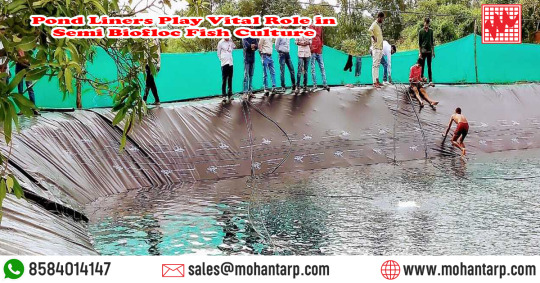
View On WordPress
0 notes
Text
Enhancing Water Conservation with HDPE Pond Liners: Uses, Applications, and Manufacturing Process
Introduction to HDPE Pond Liners
HDPE (High-Density Polyethylene) pond liners are impermeable membranes used to prevent water seepage and retain water in ponds, reservoirs, and water containment structures. These liners offer superior strength, durability, and chemical resistance, making them ideal for various water conservation and management applications. HDPE pond liners are manufactured using advanced extrusion processes and are available in different thicknesses and sizes to suit specific project requirements.
Uses and Applications
Aquaculture and Fisheries: HDPE pond liners are commonly used in aquaculture and fisheries for creating fish ponds, shrimp farms, and hatcheries. The liners prevent water seepage, maintain water levels, and provide a suitable habitat for aquatic organisms, promoting efficient aquaculture operations.
Water Storage and Conservation: HDPE pond liners serve as effective solutions for storing and conserving water in agricultural reservoirs, irrigation ponds, and rainwater harvesting systems. The liners prevent water loss due to seepage and evaporation, ensuring efficient utilization of water resources.
Landscaping and Decorative Ponds: HDPE pond liners are utilized in landscaping projects to create decorative ponds, water features, and garden reservoirs. The liners provide a waterproof barrier, allowing for the construction of aesthetically pleasing water elements in residential, commercial, and public spaces.
Environmental Protection: HDPE pond liners play a crucial role in environmental protection by containing and controlling contaminated water in landfills, industrial ponds, and wastewater treatment facilities. The liners prevent leachate seepage and groundwater contamination, minimizing environmental impact and protecting natural ecosystems.
Mining and Geotechnical Applications: HDPE pond liners are used in mining operations for containment of mine tailings, acid mine drainage, and industrial wastewater. The liners help mitigate environmental risks associated with mining activities and ensure compliance with regulatory requirements for water management and pollution control.
Manufacturing Process of HDPE Pond Liners
HDPE pond liners are manufactured through a process called extrusion, which involves the following steps:
Raw Material Preparation: High-quality HDPE resin pellets are selected and blended with additives to enhance properties such as UV resistance, flexibility, and tear strength.
Extrusion: The blended HDPE resin is fed into an extruder, where it is melted and forced through a die to form a continuous sheet of plastic.
Calendering: The extruded HDPE sheet is passed through calender rollers to control the thickness and smoothness of the liner.
Cooling and Solidification: The cooled HDPE sheet is rolled onto reels and allowed to solidify, forming a flat, flexible membrane suitable for pond lining applications.
Quality Control: The finished HDPE pond liners undergo quality control tests for parameters such as thickness, tensile strength, tear resistance, and dimensional stability to ensure compliance with industry standards and specifications.
Pond Liners Suppliers in Gujarat
Pond Liners Suppliers in Gujarat, a leading industrial state in India, hosts several suppliers specializing in the supply of HDPE pond liners. These suppliers offer a wide range of liners in different sizes, thicknesses, and specifications to meet the diverse needs of customers in agriculture, aquaculture, construction, and environmental sectors. With a focus on quality, reliability, and customer satisfaction, pond liners suppliers in Gujarat contribute to the successful implementation of water conservation projects and environmental initiatives.
Pond Lining Manufacturers in Ahmedabad
Pond Lining Manufacturer In Ahmedabad, a prominent industrial city in Gujarat, is home to manufacturers specializing in the production of HDPE pond liners. These manufacturers leverage advanced technology, skilled workforce, and quality materials to produce high-performance liners that meet the stringent requirements of customers. With a commitment to innovation, efficiency, and sustainability, pond lining manufacturers in Ahmedabad play a crucial role in supporting water management and conservation efforts in the region and beyond.
Pond Liner Manufacturer in India
In addition to Gujarat, several Pond Liner Manufacturers In India across India specialize in the production of HDPE pond liners. These manufacturers supply liners to various industries and sectors nationwide, catering to the growing demand for water storage, conservation, and environmental protection solutions. With extensive experience, expertise, and infrastructure, pond liner manufacturers in India contribute to the sustainable development and management of water resources across the country.
Conclusion
HDPE pond liners are essential components of water conservation and management systems, providing effective solutions for preventing water seepage, retaining water, and protecting the environment. Manufactured through advanced extrusion processes, HDPE pond liners offer superior strength, durability, and chemical resistance, making them suitable for diverse applications in agriculture, aquaculture, landscaping, and environmental protection. With suppliers and manufacturers operating in Gujarat, Ahmedabad, and across India, HDPE pond liners continue to play a vital role in promoting sustainable water management practices and ensuring the efficient utilization of water resources.
FAQ
Q: Are HDPE pond liners safe for aquatic life?
A: Yes, HDPE pond liners are safe for aquatic life as they are manufactured using non-toxic materials and do not leach harmful chemicals into the water.
Q: Can HDPE pond liners be repaired if damaged?
A: Yes, HDPE pond liners can be repaired if damaged. Minor tears or punctures can be patched using HDPE liner repair kits, which typically include adhesive patches designed to adhere to the liner's surface. For larger damages, professional repair services may be required to ensure effective and long-lasting repairs.
Q: Are HDPE pond liners suitable for use in harsh environmental conditions?
A: Yes, HDPE pond liners are highly resistant to environmental factors such as UV radiation, temperature fluctuations, and chemical exposure, making them suitable for use in harsh conditions. However, it's essential to select liners with appropriate thickness and additives to withstand specific environmental challenges.
Q: How long do HDPE pond liners last?
A: The lifespan of HDPE pond liners depends on various factors, including installation quality, environmental conditions, and maintenance practices. Properly installed and maintained liners can last for several decades, providing long-term protection and water containment solutions.
Q: Can HDPE pond liners be recycled at the end of their lifespan?
A: Yes, HDPE pond liners are recyclable and can be processed into new materials or products at the end of their lifespan. Recycling HDPE liners helps reduce waste and promotes resource conservation, contributing to environmental sustainability efforts.
Q: What factors should be considered when selecting HDPE pond liners for a project?
A: When selecting HDPE pond liners, factors such as liner thickness, puncture resistance, UV stability, and installation method should be considered to ensure compatibility with project requirements and environmental conditions. It's also essential to choose liners from reputable manufacturers with proven track records of quality and performance.
0 notes
Text
How much is a square meter of fish pond HDPE geomembrane? The price of fish pond HDPE geomembrane varies due to different materials, different thicknesses, and different colors. Choosing fish pond HDPE geomembrane as the bottom lining of the pond can prevent water leakage, improve water quality, control the occurrence of diseases, check the growth of fish and shrimp, increase production and survival rate, and shorten the production cycle. Fish pond HDPE geomembrane has the characteristics of anti-radiation, not easy to break, heat-resistant and cold-resistant, and long-term water-lined immersion will not change the water quality. Compared with the original sandy soil fishpond, the one-time investment is large, but its benefits are obvious in the long run.
Earth Shield Environmental Co., Ltd.
WhatsApp : +86 189 6341 6260
Tel: +86-531-76652566/+86-531-76652399
E-mail: [email protected]
Web: www.earthshields.com
0 notes
Text
#landscape#landscape design#landscape house#hardscape#fertilizers#soils#mulches#seeds for sale#plant seeds#granular chemical#amendments#pond liners#pond pumps#annual seeds#edible seeds#weed control#insect repellent#pavers#paver edging
1 note
·
View note
Text
HDPE Pond liner
Introducing our high-quality HDPE Pond Liner – a robust and reliable solution for creating durable water containment systems. As a leading manufacturer specializing in pond liners, we take pride in delivering top-notch products designed to meet the diverse needs of agricultural, environmental, and landscaping applications. Our HDPE (High-Density Polyethylene) Pond Liner is crafted using state-of-the-art manufacturing processes, ensuring exceptional strength, flexibility, and longevity. The material is carefully selected for its resistance to UV rays, punctures, and environmental stressors, making it an ideal choice for lining ponds, reservoirs, and various water storage facilities.

#HDPE Pond Liner#Water Containment#Pond Construction#Liner Solutions#Environmental Protection#WaterproofingAgricultureReservoir Liner#Landscape Design#Water Conservation#Custom Pond Liner#High-Density Polyethylene#UV Resistant Liner#Leak Prevention#Flexible Pond Liner#Farming Solutions#Pond Management#Durable Water Storage#Geomembrane#Sustainable Water Solutions
0 notes
Text
Unveiling the Magic of EPDM Liners for Pond Perfection
If you're a pond enthusiast, you're likely familiar with the importance of a reliable liner to ensure the longevity and health of your aquatic haven. In the realm of pond liners, one material stands out – EPDM liners. Let's dive into the world of EPDM liners and discover why they are the go-to choice for pond enthusiasts.
Understanding EPDM Liners
EPDM liners have gained immense popularity in the world of pond construction and maintenance. Their composition of synthetic rubber, derived from ethylene and propylene, grants them unique properties that make them ideal for various applications, including pond construction.
Durability Beyond Compare
One of the primary reasons EPDM Pond liners are preferred is their exceptional durability. These liners can withstand harsh weather conditions, UV rays, and temperature fluctuations without losing their structural integrity. This resilience ensures that your pond remains leak-free and resistant to wear and tear, providing a long-lasting solution for your aquatic oasis.
Repair Pond Liners with Ease
EPDM liners offer a convenient solution for pond enthusiasts facing liner damage. If you encounter issues such as punctures or tears, worry not – repairing EPDM liners is a straightforward process. Specialized repair kits are available, containing everything you need to repair pond liners efficiently. Whether it's a minor puncture or a more significant tear, EPDM liners make the repair process hassle-free.
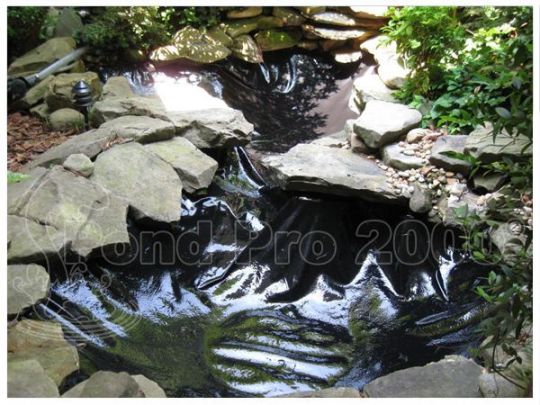
The Fix Pond Liner Advantage
EPDM liners not only excel in durability but also in flexibility. Their pliability allows for easy installation, conforming to the contours of your pond with minimal effort. This flexibility extends to repairs as well. When you need to fix pond liner, EPDM's malleability ensures a seamless patching process, maintaining the structural integrity of your pond.
Choosing the Right Pond Liner Material
When selecting a pond liner material, it's crucial to consider factors such as durability, flexibility, and ease of repair. EPDM liners check all these boxes, making them an excellent choice for pond enthusiasts. Their proven track record in pond construction and maintenance speaks volumes about their reliability and effectiveness.
Conclusion
In conclusion, if you're aiming for a pond that stands the test of time, investing in an EPDM liner is a wise choice. From withstanding the elements to providing easy solutions for repair, these liners ensure that your pond remains a thriving ecosystem for years to come.
0 notes
Text
Choosing the Right Liner for Your Agriculture Pond: A Comprehensive Guide
Agriculture ponds play a vital role in modern Farm Pond Liner. They serve as a source of irrigation, livestock water supply, and even fish farming. To ensure the effectiveness and longevity of these ponds, it's crucial to select the right pond liner. The choice of liner can significantly impact the overall functionality and lifespan of the pond. In this comprehensive guide, we will explore the different types of liners available for agriculture ponds and provide insights to help you make an informed decision.
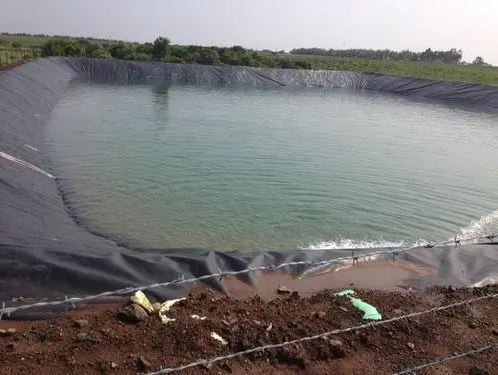
PVC Liners:
Polyvinyl chloride (PVC) liners are a popular choice for agriculture ponds. They are known for their durability, flexibility, and resistance to UV radiation and chemicals. PVC liners are relatively easy to install and are available in different thicknesses, making them suitable for various pond sizes and applications. They are also cost-effective, which is an important consideration for many farmers.
EPDM Liners:
Ethylene propylene diene monomer (EPDM) liners are another viable option. These rubber liners are resistant to UV rays and temperature extremes, making them suitable for a wide range of climates. EPDM liners are highly durable and have a long lifespan. They are available in various sizes and are relatively easy to install.
HDPE Liners:
High-density polyethylene (HDPE) liners are known for their high puncture resistance, chemical resistance, and durability. They are particularly suitable for ponds with rough or rocky terrain where the risk of punctures is higher. HDPE Pondliner are available in rolls and can be custom-fabricated to fit the pond's dimensions accurately.
RPE Liners:
Reinforced polyethylene (RPE) liners are designed for strength and longevity. They are resistant to UV rays, chemicals, and punctures, making them an excellent choice for agriculture ponds. RPE liners are typically reinforced with a woven or non-woven fabric, adding extra strength and durability. They are available in various thicknesses and can be custom-made for your pond.
Clay Liners:
In some cases, clay liners can be an economical choice for agriculture ponds. Bentonite clay is often used as a natural liner material. Clay liners can be effective in retaining water, but they require proper compaction and sealing to prevent leakage. It's essential to consider soil conditions and soil testing when using clay liners.
Concrete or Cementitious Liners:
Concrete or cementitious liners are a permanent solution for agriculture ponds. While they offer excellent durability and water retention, they can be more expensive and time-consuming to install. These liners are suitable for larger ponds where long-term stability and water retention are a priority.
Factors to Consider When Choosing a Liner:
Pond size and shape
Soil conditions
Expected water levels
Climate and environmental factors
Installation and maintenance costs
Longevity and durability
Our Service:-
Liner for Waste Landfill
HDPE Water Tank Waterproofing Sheet
Geomembrane Liners for Mining
Conclusion:
Choosing the right Liner for Agriculture Pond is a critical decision that can affect the pond's functionality and lifespan. Consider the specific requirements of your pond, such as size, soil conditions, and intended use. Evaluate the pros and cons of different liner materials like PVC, EPDM, HDPE, RPE, clay, and concrete. By making an informed choice and investing in a high-quality liner, you can ensure that your agriculture pond serves its purpose effectively and efficiently for years to come. Don't overlook the importance of this foundational component in your agricultural operations.
Liner for Agriculture Pond
0 notes
Photo

Eclectic Landscape - Gravel
Design ideas for a mid-sized eclectic partial sun backyard gravel water fountain landscape in summer.
0 notes
Photo
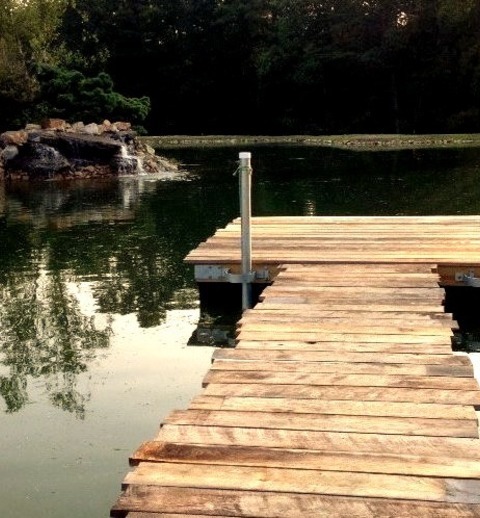
New York Natural Pool
Large natural pool fountain in the backyard with a mountain theme image
0 notes
